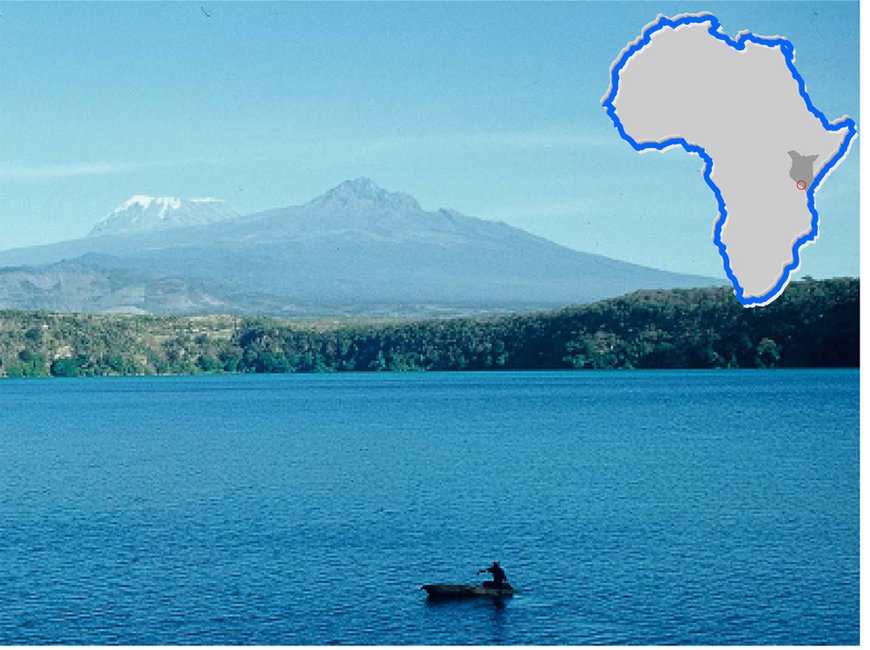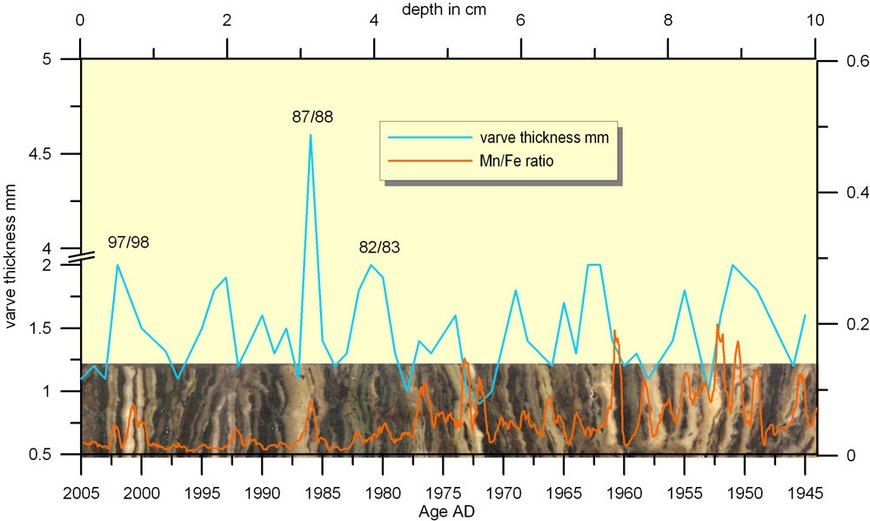Lake Challa - Kenya/Tanzania
The ESF EuroCLIMATE project CHALLACEA aims to provide a continuous high-resolution multi-proxy record of temperature and moisture-balance variability in equatorial East Africa from the Last Glacial Maximum (25 ka BP) to the present. This study is carried out on a 21.6 m long core of laminated lake sediments from Lake Challa (Kenya/Tanzania). Lake Challa is a crater lake on the lower eastern slope (880 m asl) of Mount Kilimanjaro (Figure 1) with a surface area of 4.2 km². It is a permanently stratified freshwater lake with a water budget controlled by sub-surface in- and outflow. The inflow derives mainly from percolation of precipitation in the mountain forest zone. Because of its very steep inner crater walls, the lake’s catchment area is very small and lacustrine deposits are dominated by autochthonous components (organic matter, carbonate, and biogenic silica). By investigating these lake sediments down to seasonal resolution and precise age control, we aim (1) to establish a detailed pattern and timing of late Glacial and Holocene moisture-balance fluctuations in continental East Africa; (2) to distinguish between contributions of temperature change and rainfall variation to those moisture-balance fluctuations. Our work at GFZ concentrates on unravelling the characteristics of the sedimentation processes in Lake Challa and their palaeoclimatic implications. A unique combination of methods including micro-facies analyses, SEM, XRD, XRF and µXRF-scanning will provide seasonal to decadal proxy data. Microscopic laminae counting will provide an accurate and independent time control for the Challa record. The proxy record of the last 100-120 years will be calibrated with meteorological data in order to improve the interpretation of the long data series in terms of hydrological and temperature variability in Eastern Africa.



